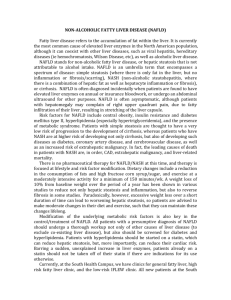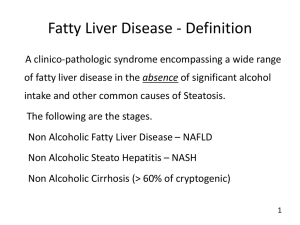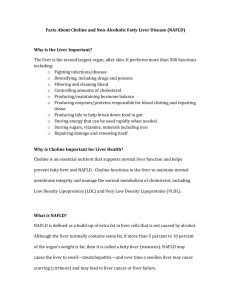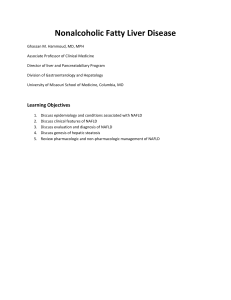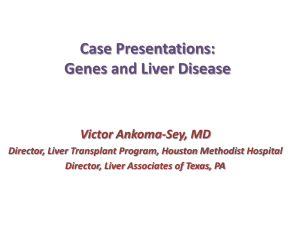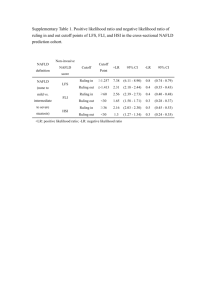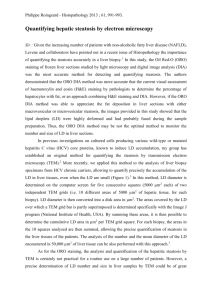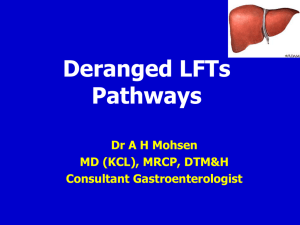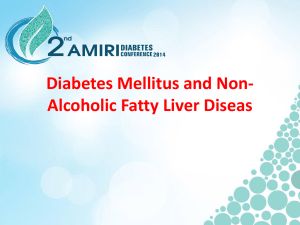Presentation Slides - Institute for the Social Sciences
advertisement
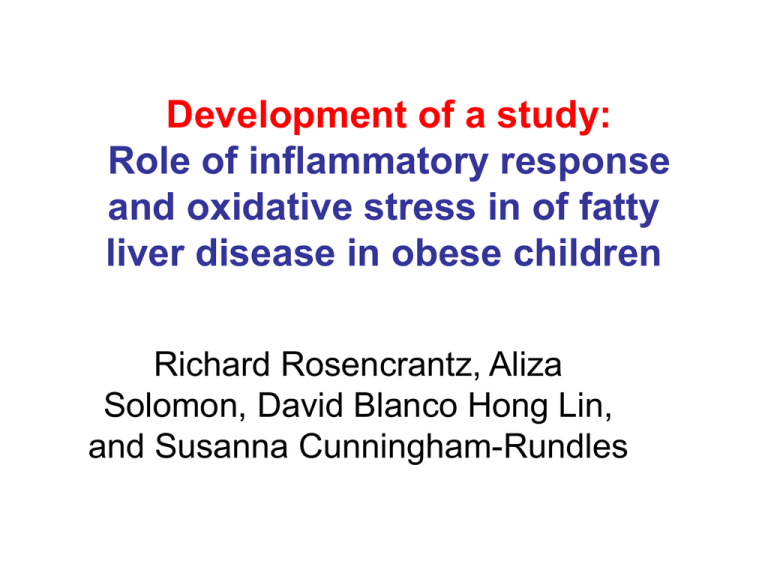
Development of a study: Role of inflammatory response and oxidative stress in of fatty liver disease in obese children Richard Rosencrantz, Aliza Solomon, David Blanco Hong Lin, and Susanna Cunningham-Rundles background Non alcoholic fatty liver disease is increasing in children: 10-12% of normal weight children 2-19 years of age 38% of obese children Obesity is associated with increased inflammatory immune response and increased leukocytes Specific aims Aim 1: Determine the significance of dysregulated inflammatory cytokine response, altered immune cell subsets, and oxidative stress for staging of pediatric patients within the clinical spectrum of NAFLD Steatosis Steatohepatitis Approach: Correlate biological markers of inflammation such as elevated cytokines and urinary F2 isoprostanes with liver function and non invasive detection of fat in liver Ultrasound MRI Specific aims Aim 2: Determine the effects of short term dietary intervention on normalization of dysregulated inflammatory cytokine response, altered immune cell subsets, and oxidative stress in NAFLD Steatosis Steatohepatitis Approach: Correlate biological markers of inflammation such as elevated cytokines and urinary F2 isoprostanes with liver function and non invasive detection of fat in liver after one month supplementation with omega- 3 fatty acids to isocaloric diet. Pilot study 16 obese patients (BMI>95%ile, mean age 11.5 years, range 3-17 years, 5 females Tests: Standard liver function tests, Creatinine-adjusted urinary F2-isoprostane Lymphocyte immunophenotype subsets Liver sonogram Comparisons: Steatohepatitis Hepatic steatosis group Obesity only Problems with study Obesity based on BMI, no body composition Limited diet history Limited discussion of diet and exercise Treatment recommendation limited to Vitamin E Lack of followup Liver enzymes ALT Levels 100 90 80 70 60 50 40 30 20 10 0 OB ST SH Limitation: comparatively few obese only controls Lymphocyte subset differences CD3+ T lymphocyte percentages reduced in SH compared to age-matched controls (p=0.036) CD3+/CD4+ T helper lymphocyte percentages reduced in SH compared with age-matched controls (p=0.01) and adult controls( p=0.03) CD19+ B lymphocytes reduced in obese children compared to age matched controls (p=0.03) Limitation: historical age matched controls Expression of CD95 among groups Percent co expressing CD3+CD95+ T Lymphocytes 60 50 40 30 20 10 0 SH NFLD OB AC CD3+/CD95+ lymphocyte percentage decreased in NAFLD (p=0.015) and SH groups (p=0.039) compared to adult controls Limitation: need to follow up longitudinally Urinary isoprostane in relationship to ALT ALT vs. F2 Isoprostane 90.0 80.0 70.0 SH group 60.0 ALT ST group 50.0 OB group 40.0 30.0 20.0 10.0 0.0 0 1,000 2,000 3,000 4,000 5,000 6,000 8-epi-prost ng/g creatinine Limitation: few subjects and few obese only controls Conclusions Direct measurements of oxidative stress might be able to distinguish steatohepatitis from steatosis in obese children. Lymphocyte subsets show distinct alterations in obese children with and without NAFLD but longitudinal studies are required to determine significance. Clinical NAFLD in the pediatric population appears to correlate with non-invasive markers of oxidative stress.

